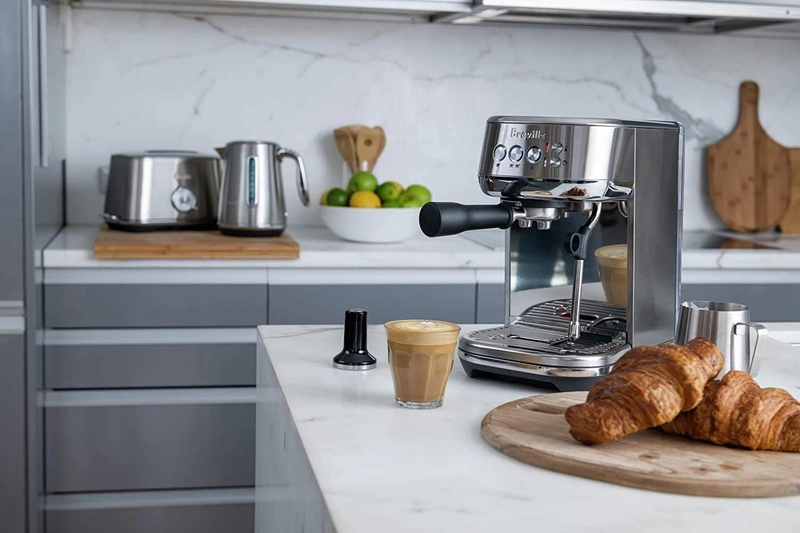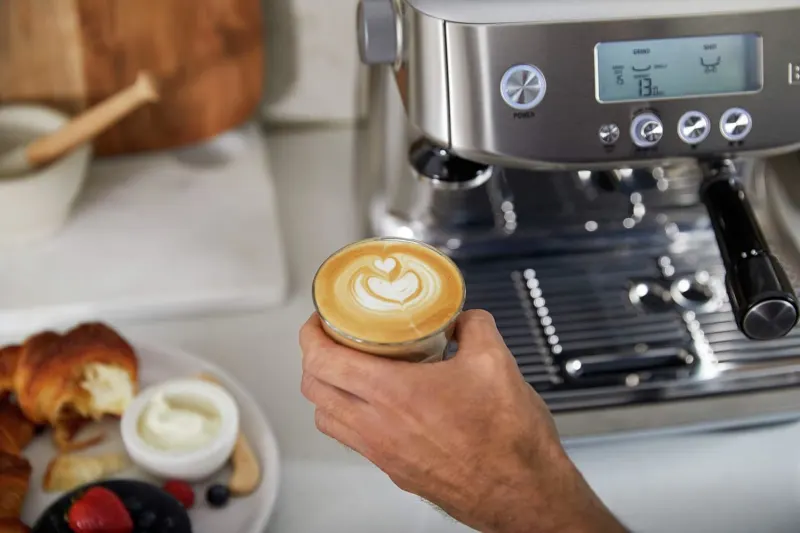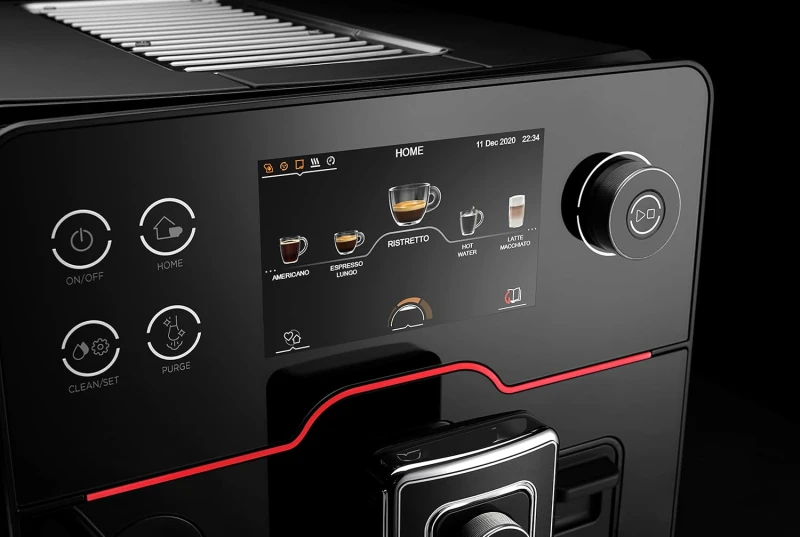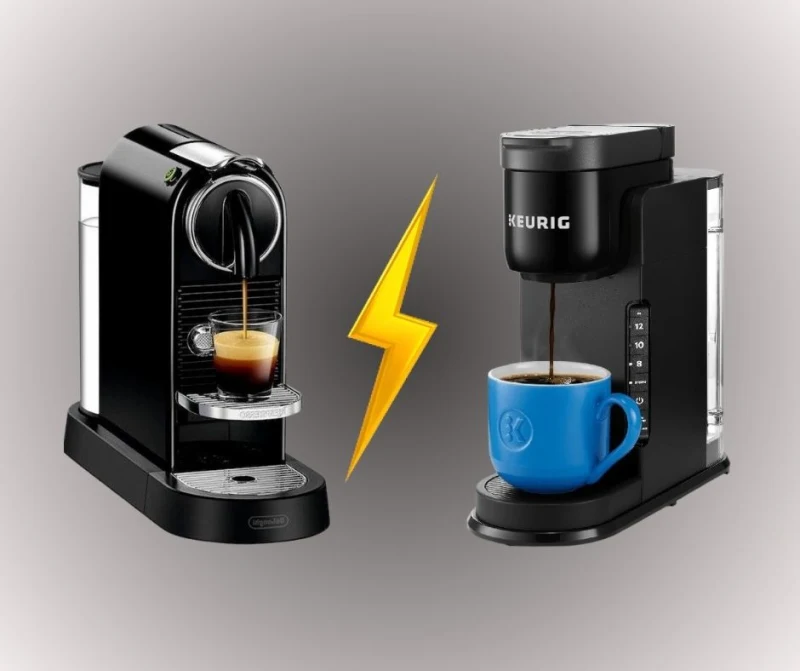Coffee to Water Ratio: The Complete Brewing Guide (2025)
As a coffee expert who has spent years perfecting brewing techniques, I can confidently say that mastering the coffee to water ratio is the single most important factor in brewing consistently great coffee. Whether you're using a French press, pour over, or drip machine, getting this fundamental right transforms your coffee from mediocre to exceptional.
The coffee to water ratio determines the strength, flavor clarity, and overall quality of your brew. Too much water and you'll get a weak, watery cup. Too little, and you'll extract bitter, unpleasant compounds. This comprehensive guide will teach you the golden ratio, method-specific ratios, and how to adjust them to match your perfect cup.
Understanding the Golden Coffee to Water Ratio
The "golden ratio" is the industry standard recommended by the Specialty Coffee Association (SCA) for optimal coffee extraction. This ratio produces a balanced, flavorful cup that highlights the coffee's natural characteristics without over or under-extraction.
The Golden Ratio
1:16 to 1:18 - This means 1 gram of coffee for every 16-18 grams (or milliliters) of water.
- 1:15 - Stronger, more concentrated brew
- 1:16 - Balanced, well-rounded cup (recommended starting point)
- 1:17 - Lighter, more delicate flavors
- 1:18 - Mild, subtle cup
In practical terms, if you're brewing 500ml (about 17oz) of water, using the 1:16 ratio means you'll need approximately 31 grams of coffee. This golden ratio provides an excellent starting point, but remember that coffee is subjective - your perfect ratio might differ based on bean origin, roast level, and personal preference.
Why Ratio Matters More Than You Think
The coffee to water ratio directly impacts coffee extraction - the process of dissolving soluble compounds from ground coffee into water. Proper extraction yields:
- Balanced flavor - Sweet, acidic, and bitter notes in harmony
- Optimal strength - Concentrated enough to taste rich, not overwhelming
- Clear complexity - Individual flavor notes are distinguishable
- Pleasant mouthfeel - Body and texture that feels satisfying
When you deviate too far from ideal ratios, you either under-extract (weak, sour, grassy flavors) or over-extract (bitter, astringent, hollow taste). Getting your ratio right is the foundation for everything else in coffee brewing.
How to Measure Coffee Grounds to Water Ratio
Consistency is key to great coffee, and that requires accurate measurement. Here's how to measure your coffee to water ratio properly.
Method 1: Digital Scale (Recommended)
Using a digital kitchen scale is the gold standard for measuring coffee. Weight-based measurements are far more accurate than volume because coffee density varies significantly based on:
- Roast level (light roasts are denser than dark roasts)
- Grind size (coarse vs fine grounds have different volumes)
- Bean origin and processing method
- How compacted the grounds are
How to Use a Scale
- Place your brewing vessel on the scale and tare (zero) it
- Add your desired amount of ground coffee (e.g., 30 grams)
- Calculate water needed: multiply coffee weight by your ratio (30g × 16 = 480ml water)
- Brew using the precise measurements
- Adjust ratio in small increments (±2 grams) to fine-tune taste
Method 2: Volume Measurements (Less Accurate)
If you don't have a scale, you can use volume measurements with tablespoons and measuring cups. While less precise, this method works for consistent daily brewing once you find your preferred ratio.
Standard Tablespoon Method
- 2 tablespoons ground coffee
- Per 6 ounces (180ml) water
- Approximately 1:15 ratio
- Adjust by ½ tablespoon increments
Coffee Scoop Method
- 1 standard scoop (2 tablespoons)
- Per 6 ounces water
- Level scoops, not heaping
- Same scoop every time for consistency
⚖️ Pro Tip: Invest in a Scale
A basic kitchen scale costs $15-25 and will dramatically improve your coffee consistency. Look for one that measures in 0.1g increments and has a tare function. It's the single best investment you can make for better home brewing, regardless of which coffee machine you use.
French Press Coffee to Water Ratio
The French press deserves special attention because it's one of the most popular home brewing methods and benefits significantly from proper ratio management. The immersion brewing style of French press requires slightly different ratios than pour-over methods.
Ideal French Press Water to Coffee Ratio
For French press, I recommend a ratio between 1:15 and 1:17 (coffee to water). This produces the rich, full-bodied cup that French press is known for, with enough concentration to stand up to the brewing method's natural sediment.
French Press Ratio Quick Reference
- 22-23 grams coffee (about 4 tablespoons)
- Ratio: 1:15 to 1:16
- 60-65 grams coffee (about 12-13 tablespoons)
- Ratio: 1:15 to 1:16
- 90-100 grams coffee (about 18-20 tablespoons)
- Ratio: 1:15 to 1:16
French Press Brewing Tips
Beyond ratio, several factors affect your French press coffee quality:
- Grind size: Use coarse grounds similar to sea salt texture - too fine creates excessive sediment and bitter over-extraction
- Water temperature: 195-205°F (90-96°C) for optimal extraction without scorching
- Steep time: 4 minutes is standard; increase to 5-6 minutes for a stronger, more extracted cup
- Coffee freshness: Use freshly roasted beans within 2-4 weeks of roast date for best flavor
- Water quality: Clean, filtered water significantly impacts taste - avoid heavily chlorinated tap water
☕ Why French Press Needs More Coffee
French press uses a slightly stronger ratio (1:15 vs 1:17) compared to pour-over methods because immersion brewing is less efficient at extraction. The coffee grounds sit in contact with all the water simultaneously rather than fresh water continuously flowing through, which means you need more coffee to achieve the same strength and flavor intensity.
Coffee to Water Ratios for Different Brewing Methods
Each brewing method has its own ideal ratio based on extraction efficiency, brew time, contact time, and desired final strength. Here's your complete guide to ratios across all popular brewing methods.
Pour Over (V60, Chemex, Kalita)
- Ratio: 1:16 to 1:17
- Example: 25g coffee to 400-425ml water
- Grind: Medium (like granulated sugar)
- Brew time: 2.5-3.5 minutes
- Best for: Clean, bright, complex flavor profiles
Drip Coffee Maker
- Ratio: 1:17
- Example: 60g coffee to 1000ml water (10 cups)
- Grind: Medium
- Brew time: 4-6 minutes (automatic)
- Best for: Consistent, easy daily brewing
Espresso
- Ratio: 1:2 to 1:2.5
- Example: 18g coffee to 36-45g liquid espresso
- Grind: Very fine (like powdered sugar)
- Brew time: 25-30 seconds
- Best for: Concentrated, intense coffee base for drinks
- Note: Learn more about espresso extraction and pressure for perfect shots
AeroPress
- Ratio: 1:14 to 1:16
- Example: 15-17g coffee to 240ml water
- Grind: Medium-fine
- Brew time: 1-2 minutes
- Best for: Versatile, clean cup with good body
Cold Brew
- Ratio (concentrate): 1:5 to 1:8
- Ratio (ready-to-drink): 1:12 to 1:15
- Example: 100g coffee to 500ml water (concentrate), then dilute 1:1 with water or milk
- Grind: Extra coarse
- Brew time: 12-24 hours
- Best for: Smooth, low-acid, concentrated coffee
Moka Pot
- Ratio: 1:7 to 1:10
- Example: Fill basket completely (~20g) with water filled to valve
- Grind: Fine to medium-fine
- Brew time: 4-5 minutes
- Best for: Strong, espresso-like coffee without a machine
Turkish Coffee
- Ratio: 1:10 to 1:12
- Example: 10g coffee to 100-120ml water per serving
- Grind: Extra fine (powder)
- Brew time: 3-4 minutes
- Best for: Traditional, thick, strong coffee experience
🎯 Finding Your Method's Sweet Spot
These ratios are starting points based on traditional brewing practices. Your specific equipment, bean characteristics, and taste preferences may require slight adjustments. Keep notes on what works best for your setup and stick with it for consistency.
How to Adjust Coffee Ratio for Your Perfect Strength
Once you understand the baseline ratios, fine-tuning to match your taste preferences is straightforward. Here's how to adjust systematically rather than guessing.
Making Stronger Coffee
If your coffee tastes too weak or watery, increase the concentration by using more coffee or less water:
- Move from 1:17 to 1:16 (or 1:16 to 1:15)
- Add 5-10 grams more coffee while keeping water constant
- Reduce water by 50-100ml while keeping coffee constant
- Make adjustments gradually - small changes have big impacts
Making Lighter Coffee
If your coffee is too strong, bitter, or overwhelming:
- Move from 1:16 to 1:17 (or 1:15 to 1:16)
- Reduce coffee by 5-10 grams while keeping water constant
- Increase water by 50-100ml while keeping coffee constant
- Be careful not to go beyond 1:18 or you risk under-extraction
Strength vs. Extraction
Strength refers to the ratio of dissolved coffee solids to water (concentration).
Extraction is the percentage of coffee compounds dissolved from the grounds (target: 18-22%).
You can have strong but under-extracted coffee (sour, grassy) or weak but over-extracted coffee (bitter, hollow). Adjust ratio for strength, grind size and brew time for extraction.
When Not to Adjust Ratio
Don't change your ratio if the problem is:
- Bitterness (over-extraction - reduce brew time or coarsen grind)
- Sourness (under-extraction - increase brew time or fine grind)
- Stale taste (use fresher beans)
- Off-flavors (check water quality and equipment cleanliness)
The Systematic Approach to Finding Your Ratio
- Start with the standard ratio for your brewing method (e.g., 1:16 for pour over)
- Keep all other variables constant - same beans, grind size, water temp, brew time
- Brew and taste - evaluate strength, flavor balance, and overall enjoyment
- Make one small adjustment - change ratio by 5g coffee or 50ml water
- Brew again and compare - note differences in a journal or phone notes
- Repeat until you find your sweet spot - usually takes 3-5 iterations
- Document your perfect ratio - write it down and use it consistently
Common Coffee to Water Ratio Mistakes (And How to Fix Them)
Even experienced home brewers make these ratio mistakes. Here's what to watch for and how to correct them.
❌ Mistake 1: Measuring Coffee by Volume Instead of Weight
The Problem: A tablespoon of light roast weighs more than a tablespoon of dark roast. Volume measurements are inconsistent.
The Fix: Invest in a kitchen scale and measure in grams. If you must use volume, use the exact same scoop and technique every time.
❌ Mistake 2: Not Accounting for Ice in Iced Coffee
The Problem: Brewing hot coffee and pouring it over ice dilutes the final cup significantly.
The Fix: Use a stronger ratio (1:14 or 1:15) when brewing for iced coffee, or brew concentrate and dilute intentionally. Account for ice melt in your total water calculation.
❌ Mistake 3: Using the Same Ratio for All Brewing Methods
The Problem: A 1:16 ratio works for pour over but produces weak French press and way too much espresso.
The Fix: Learn the appropriate ratio for each brewing method you use and adjust accordingly. Different extraction methods require different ratios.
❌ Mistake 4: Forgetting to Adjust for Coffee Freshness
The Problem: Very fresh coffee (3-7 days post-roast) blooms more and extracts faster. Stale coffee (30+ days) extracts slowly and unevenly.
The Fix: For very fresh beans, use slightly less coffee or coarser grind. For older beans, increase coffee amount slightly or use finer grind. Best practice: buy fresh beans and use within 2-4 weeks.
❌ Mistake 5: Not Compensating for Water Absorption
The Problem: Coffee grounds absorb water during brewing (about 2x their weight). If you want 500ml final yield, you need more than 500ml starting water.
The Fix: Add extra water to account for absorption. Rule of thumb: add 2ml water per gram of coffee used (30g coffee = add 60ml extra water for target yield).
❌ Mistake 6: Changing Multiple Variables at Once
The Problem: Changing ratio, grind size, and brew time simultaneously makes it impossible to know what improved or worsened the coffee.
The Fix: Change one variable at a time. Keep detailed notes. This systematic approach helps you understand what each factor contributes to your final cup.
Troubleshooting: Fixing Weak, Bitter, or Off-Tasting Coffee
When your coffee doesn't taste right, the ratio is often the culprit - but not always. Here's how to diagnose and fix common problems.
☕ Coffee Tastes Weak or Watery
Possible Causes:
- Ratio too weak (too much water or too little coffee)
- Grind too coarse (water flows through too quickly)
- Brew time too short (insufficient extraction)
- Water temperature too low (under-extraction)
Solutions:
- Increase coffee by 5-10g or decrease water by 50-100ml
- Grind finer to slow water flow and increase extraction
- Extend brew time by 30-60 seconds
- Ensure water temp is 195-205°F (90-96°C)
😖 Coffee Tastes Bitter or Harsh
Possible Causes:
- Over-extraction (brew time too long, grind too fine)
- Water temperature too high (scorching)
- Ratio too strong (over-concentrated bitterness)
- Stale or over-roasted beans
Solutions:
- Coarsen grind or reduce brew time
- Lower water temp to 195-200°F
- Try a weaker ratio (1:17 instead of 1:15)
- Use fresher, lighter-roasted beans
🍋 Coffee Tastes Sour or Grassy
Possible Causes:
- Under-extraction (brew time too short, grind too coarse)
- Water temperature too low
- Very light roast beans requiring adjusted brewing
- Uneven extraction due to poor brewing technique
Solutions:
- Grind finer to increase extraction
- Increase brew time by 30-60 seconds
- Raise water temp to 200-205°F
- Ensure even saturation of all coffee grounds
🫥 Coffee Tastes Flat or Dull
Possible Causes:
- Stale coffee beans (past peak freshness)
- Poor water quality (chlorine, minerals)
- Dirty brewing equipment affecting taste
- Simultaneous under and over-extraction (uneven brewing)
Solutions:
- Use fresh beans within 2-4 weeks of roast date
- Use filtered or bottled water
- Clean your equipment thoroughly with proper descaling
- Improve brewing technique for more even extraction
🔍 Diagnostic Approach
When troubleshooting, always start by checking your ratio first - it's the easiest variable to control. If adjusting the ratio doesn't solve the problem, then investigate grind size, brew time, water temperature, and bean quality in that order. Keep detailed notes so you can track what changes improved your coffee.
Frequently Asked Questions
What is the golden ratio for coffee to water?
The golden ratio for coffee to water is 1:16 to 1:18, meaning 1 gram of coffee for every 16-18 grams (or milliliters) of water. This is the standard recommended by the Specialty Coffee Association (SCA) and produces a well-balanced cup. For a stronger brew, use 1:15, and for a lighter cup, use 1:17 or 1:18.
What is the best coffee to water ratio for French press?
The ideal French press coffee to water ratio is 1:15 to 1:17. For a standard 8-cup (1 liter) French press, use 60-65 grams of coarsely ground coffee to 1000ml of water. This produces a rich, full-bodied cup characteristic of French press brewing. Start with 1:16 (62.5g per liter) and adjust to your taste preferences.
How do you measure coffee grounds to water ratio?
The most accurate method is using a kitchen scale: weigh your coffee in grams and your water in grams (or milliliters, which are equivalent). If you don't have a scale, use the standard measure of 2 tablespoons of ground coffee per 6 ounces (180ml) of water. However, a scale provides consistent results since coffee density varies by roast level and grind size.
Why does my coffee taste weak or watery?
Weak or watery coffee typically results from using too much water or too little coffee in your ratio. Try increasing your coffee amount or decreasing your water. Additionally, check your grind size (too coarse can cause under-extraction), brew time (too short leads to weak coffee), and water temperature (below 195°F results in poor extraction). Start with the golden ratio of 1:16 and adjust from there.
How much coffee do I need for 12 cups of water?
For 12 cups of coffee (using the standard 6oz cup measurement = 72oz or 2130ml total), you'll need approximately 120-135 grams of ground coffee, depending on your preferred strength. Using the golden ratio of 1:16, that's 133 grams. In tablespoons, this equals about 24 tablespoons or 1.5 cups of ground coffee. Adjust based on your taste preferences.
Does the coffee to water ratio change for different brewing methods?
Yes, different brewing methods require different coffee to water ratios. French press uses 1:15-1:17, pour over uses 1:16-1:17, drip coffee uses 1:17, espresso uses 1:2-1:2.5, cold brew uses 1:5-1:8 (for concentrate), and Aeropress uses 1:14-1:16. These variations account for differences in extraction efficiency, brew time, and final beverage style.
Should I measure coffee by weight or volume?
Always measure coffee by weight (grams) rather than volume (scoops or tablespoons) for consistent results. Coffee beans vary in density based on roast level, origin, and grind size, so volume measurements can be inaccurate. A scale ensures you use the exact same amount every time. If you must use volume, know that 1 tablespoon of ground coffee weighs approximately 5-7 grams depending on the grind and roast.
How do I adjust the coffee ratio for stronger coffee?
To make stronger coffee, decrease the ratio number (use more coffee or less water). Move from 1:17 to 1:15 or even 1:14. For example, instead of 60g coffee to 1000ml water (1:16.7), use 70g coffee to 1000ml water (1:14.3). Make small adjustments of 5-10 grams at a time. Note that "stronger" refers to concentration, not bitterness - avoid over-extracting by maintaining proper brew time and grind size.
Final Thoughts: Making Ratio Work for You
The coffee to water ratio is your foundation for great coffee, but it's not a rigid rule - it's a starting point for discovering what you love. After years of brewing coffee professionally and at home, I've learned that the "perfect" ratio is the one that consistently produces coffee you enjoy drinking.
Start with the recommended ratios for your brewing method, invest in a simple kitchen scale for accuracy, and then experiment systematically until you find your sweet spot. Once you've dialed in your perfect ratio, document it and use it consistently. You'll be amazed at how much better your coffee tastes when you remove the guesswork and brew with precision.
Remember, the journey to perfect coffee is as rewarding as the destination. Whether you're brewing in a French press, pour over, or any other method, understanding and controlling your coffee to water ratio gives you the power to create exceptional coffee at home. Happy brewing!
Related Articles

Top 10 Best Coffee Machines for 2025→
A comprehensive guide to the best coffee machines for every budget and need. Compare features, prices, and find the perfect machine for your home.

Breville Barista Express vs Pro: Which Should You Buy?→
A detailed comparison of the Breville Barista Express and Pro espresso machines. Explore features, performance, and value to find the best fit for your coffee needs.

Breville vs De'Longhi: Which Makes Better Espresso?→
A comprehensive comparison of Breville and De'Longhi espresso machines. Explore features, performance, and find the best fit for your coffee needs.

10 Best Espresso Machines Under $500 (2025 Guide)→
Expert reviews of the best espresso machines under $500, find your perfect machine with real testing results.

Breville vs Gaggia: Which Espresso Machine is Right for You?→
A detailed comparison of Breville and Gaggia espresso machines. Explore features, performance, and value to find the best fit for your coffee needs.

Nespresso vs Keurig: Which Pod System is Best?→
A comprehensive comparison of Nespresso and Keurig pod coffee systems. Explore features, coffee quality, and find the best fit for your lifestyle.

James Wilson
Coffee Expert & Product Reviewer
With over 15 years of experience in the specialty coffee industry, James has dedicated his career to perfecting the art and science of coffee brewing. As a certified Q Grader and former barista trainer, he combines technical expertise with practical knowledge to help coffee enthusiasts brew their best cup every time.